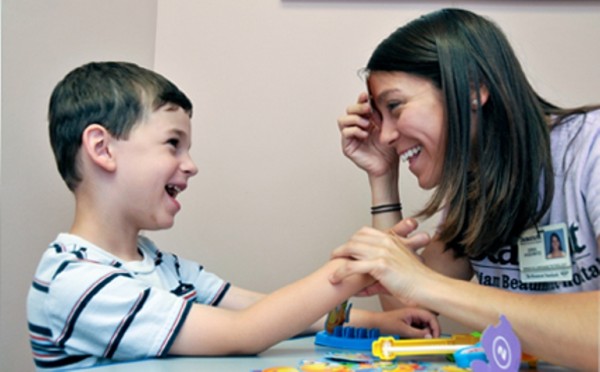It is common knowledge that there is no cure for autism. But, if your child has autism, there are still some autism treatment options available that can significantly improve the quality of your child’s life.
In ancient times, when a child was diagnosed with an autism-like disorder, he was institutionalized on a permanent basis. Fortunately, with the advancements in medicine and the treatment options available, such drastic measures are no longer around. The success of these options depends heavily on early intervention. Children who receive timely medical help during their toddler years have a better chance of improvement.

Medical Options For Autism Treatment
There are several medical as well as non-medical options for autism treatment.
Children diagnosed with Autism Spectrum Disorder (ASD) often display characteristic physical behaviors such as irritability, self injurious behavior, and hyperactivity, all of which can interfere with the child’s day-to-day functioning. Pharmaceutical treatments can help reduce many of these physical symptoms and make him ready to receive other forms of treatment. Some common medicines that are prescribed for autism treatment are:
-
Risperidone
This medication is commonly prescribed for dealing with aggression, irritability, and self injurious tendencies, as these symptoms are common in children with ASD.
-
Aripiprazole
This medicine is given to children who are experiencing irritability.
Non-Medical Options For Autism Treatment
Non-medical treatments are by far the most common option preferred by the parents of autistic children. In many cases, medical and non-medical treatments are combined as part of a holistic approach to autism treatment. Here are a few non-medical forms of treatment.
-
Applied Behavior Analysis (ABA)
This is a type of intervention based on the principles of behavioral psychology. It has various types, each of which adopts a different approach to autism treatment.
-
Intensive Behavioral Intervention (IBI)
IBI trainers use positive reinforcement to replace negative behaviors such as aggression, banging the head on the wall, and biting with positive behaviors. Trainers also try to teach the autistic child new skills such saying hello to another person, tying shoe laces, and even learning how to use the bathroom.
-
Early Intensive Behavioral Intervention (EIBI)
This type of intervention uses ABA, but is meant for children aged 5 years and younger.
-
Discrete Trial Training (DTT)
In DTT, whatever is being taught to the child is broken down into smaller steps. The child is given several prompts to encourage him to complete the step, after which a reward of the child’s choice is offered. Prompts and rewards are gradually phased out over time.
The Ivar Lovaas Model is a form of DTT used with children between the ages of 2 and 8. In this model, language and imitation are used as teaching tools. The child is motivated to complete a task using reinforcers and is rewarded upon task completion. Treatment sessions require twenty to forty hours per week.
-
Pivotal Response Training
This is a form of ABA in which the trainer focuses on a child’s motivation in order to get him to complete tasks, communicate, and socialize. This training is then generalized across several situations with different people.
The Early Start Denver Model is based on the Pivotal Response Training and ABA. The focus here is on implementing interventions during play-based and relationship-focused tasks. This type of intervention is used for children between 1 and 4 years of age.
-
-
Speech Therapy
Children with autism spectrum disorders often have difficulties in expressing themselves verbally and/or in understanding others. A speech language pathologist can help such a child by teaching him different ways of communicating, in natural settings. The pathologist may also teach the child sign language, gestures, and picture communication.
-
Occupational Therapy (OT)
Occupational Therapy is used when a child with ASD has sensory-integration issues. OT can help a child learn life skills that require fine-finger movements, such as using a knife and fork, writing, and removing shoes. With younger children, the focus of an OT program is an autistic child’s daily routines and the improvement of the quality of his life. With older children, OT is used to foster independence and improve social skills.

While there is no cure for autism, autism therapies can improve the condition of an autistic child. -
Physical Therapy (PT)
Physical therapy is necessary when a child affected with ASD has issues with gross motor and sensor integration. Like OT, physical therapy also focuses on activities of daily living. It teaches skills such as walking, running, sitting, and balancing. Physical therapy works best when it is part of an early intervention treatment.
If your child has been diagnosed with ASD, you have several options for his treatment. These are most effective when the intervention is started early on and is integrated with other forms of autism treatment, such as IBI with PT. Get an early diagnosis to ensure that your child gets timely treatment and a better quality of life.